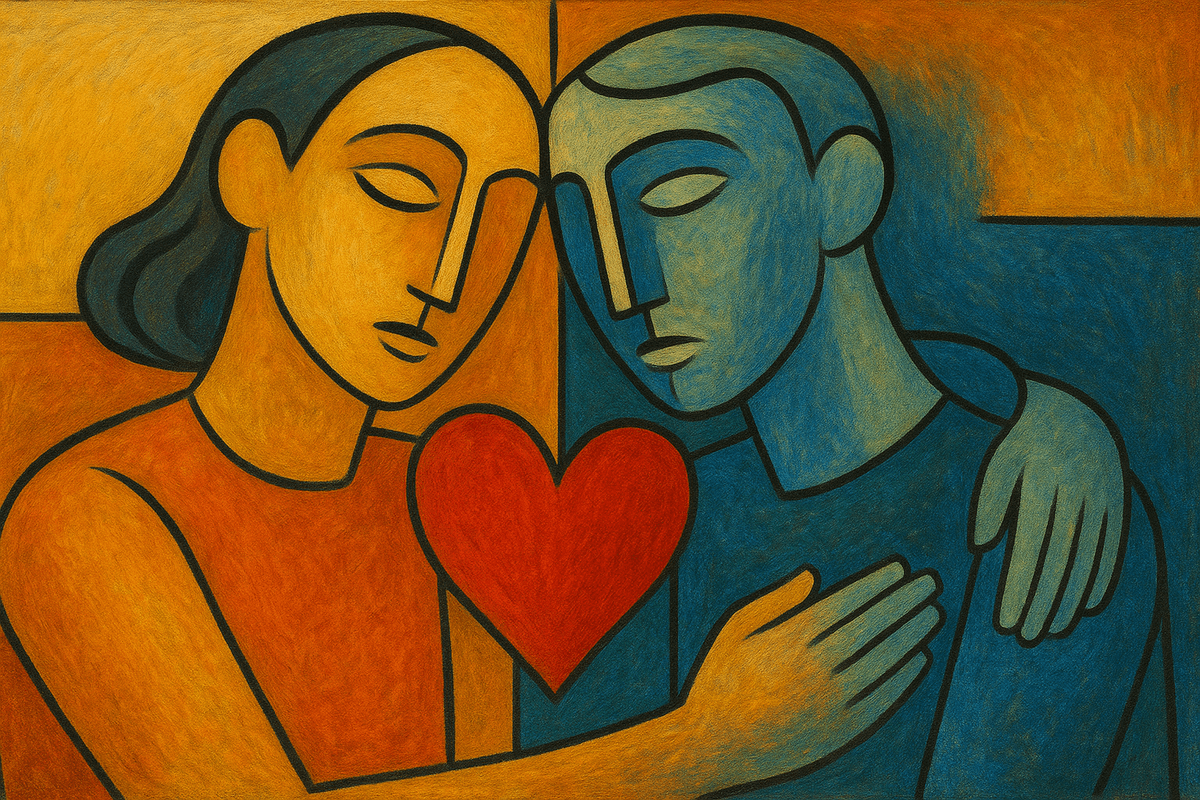I’ve never been sure whether “falling in love” is something I feel, or something I’ve been taught to perform. On one hand, there’s the bodily drama — butterflies, sweaty palms, sleepless nights. On the other, there’s the endless script: Hollywood zooms in, Spotify croons, Shakespeare insists teenagers dying for each other is the highest form of devotion. Am I actually in love, or am I just well-rehearsed?
Western culture loves the lightning-strike story — one person, one destiny, one life rearranged. Other traditions seem far more sensible. In te ao Māori, aroha stretches across compassion, connection, land, and whānau — hardly the stuff of rom-coms. In many Eastern philosophies, love looks more like cultivation than combustion, less “you complete me” and more “let’s not tip the balance.” Compared to that, “falling” sounds clumsy at best, dangerous at worst.
And then there’s projection. Françoise Simpère nailed it in The Art and Etiquette of Polyamory (2005): half the time we don’t even like the other person — we just like being liked by them. Honestly, I’ve caught myself there. Sometimes I’m intoxicated less by who they are, and more by the glow of my reflection in their eyes. It’s narcissism with a soundtrack.
So let’s be blunt. “Falling in love” isn’t a grand descent into destiny; it’s a cocktail of brain chemicals, social programming, and our desperate hunger for validation. It’s not tumbling through centuries of epic stories; it’s tripping over my own ego, hoping someone catches me before I face-plant. If that’s romance, then sure — I’ve fallen. But mostly, it feels like gravity doing its usual job.
And yet — if you’re one of those lucky people who are in love, genuinely, sustainably, ridiculously — good on you. Just don’t expect me to stop side-eyeing the fall.

